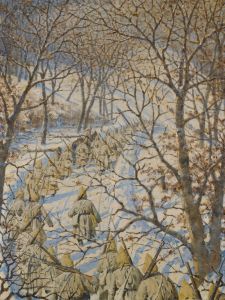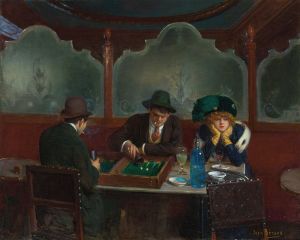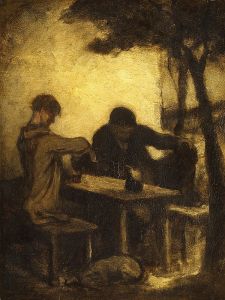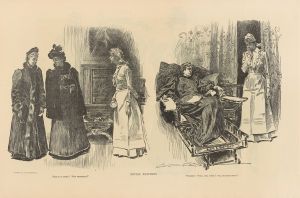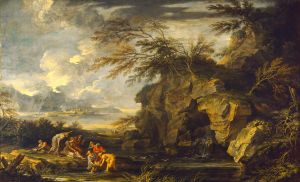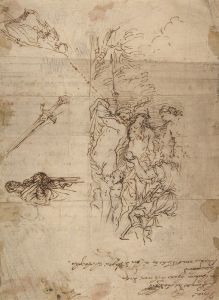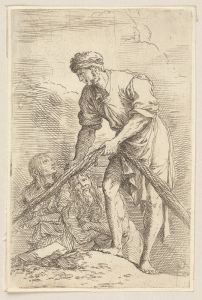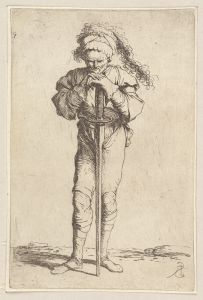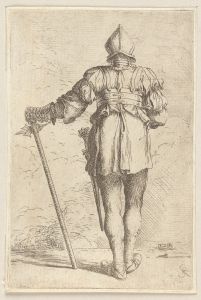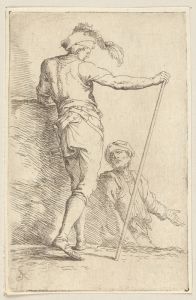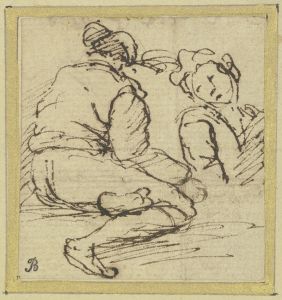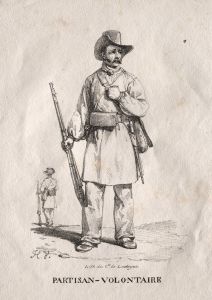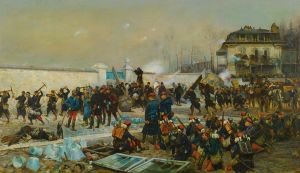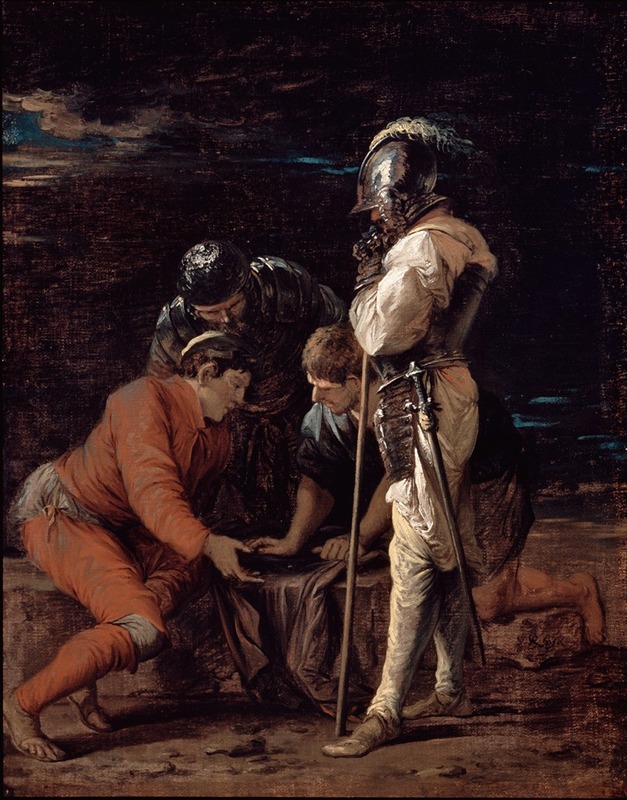
Soldiers Gambling
A hand-painted replica of Salvator Rosa’s masterpiece Soldiers Gambling, meticulously crafted by professional artists to capture the true essence of the original. Each piece is created with museum-quality canvas and rare mineral pigments, carefully painted by experienced artists with delicate brushstrokes and rich, layered colors to perfectly recreate the texture of the original artwork. Unlike machine-printed reproductions, this hand-painted version brings the painting to life, infused with the artist’s emotions and skill in every stroke. Whether for personal collection or home decoration, it instantly elevates the artistic atmosphere of any space.
"Soldiers Gambling" is a painting by the Italian Baroque artist Salvator Rosa, known for his dramatic and often unconventional works. Rosa was an influential figure in the 17th century, recognized for his versatility as a painter, poet, and printmaker. Born in 1615 in Arenella, near Naples, Rosa's career spanned various Italian cities, including Naples, Rome, and Florence, where he became associated with the intellectual and artistic circles of his time.
The painting "Soldiers Gambling" exemplifies Rosa's interest in depicting scenes of everyday life, infused with a sense of drama and tension. This work captures a group of soldiers engaged in a game of chance, a common pastime among military men during the period. The composition is dynamic, with figures arranged in a way that draws the viewer's eye across the canvas, highlighting the interactions and expressions of the soldiers.
Rosa's use of chiaroscuro, the contrast between light and dark, is evident in this painting, creating a sense of depth and volume. The lighting focuses on the central figures, emphasizing their gestures and the intensity of the moment. This technique was a hallmark of Baroque art, aimed at enhancing the emotional impact of the scene.
The soldiers in the painting are depicted with a sense of realism, their rugged appearances and worn clothing suggesting the hardships of military life. Rosa often portrayed subjects from the lower strata of society, such as soldiers, bandits, and peasants, challenging the traditional norms of art that favored idealized representations of nobility and religious themes.
"Soldiers Gambling" reflects Rosa's interest in themes of fortune and fate, common motifs in his work. The act of gambling serves as a metaphor for the unpredictability of life, a concept that resonated with the tumultuous times in which he lived. The Thirty Years' War and other conflicts of the 17th century had a profound impact on European society, and Rosa's paintings often convey a sense of the instability and uncertainty of the era.
Salvator Rosa's work was characterized by a rebellious spirit, both in his choice of subject matter and his approach to painting. He was known for his disdain for the conventions of the art world and often used his art to critique the social and political issues of his time. This independent streak made him a unique figure in the Baroque period, and his influence can be seen in the works of later artists who admired his boldness and originality.
"Soldiers Gambling" is a testament to Rosa's skill in capturing the human condition, blending realism with a dramatic flair that engages the viewer. While the painting may not be as widely recognized as some of his other works, it remains an important example of his contribution to the Baroque movement and his ability to convey complex themes through art.





